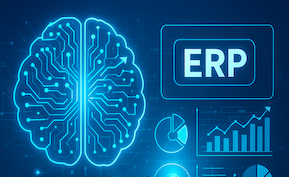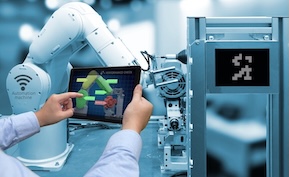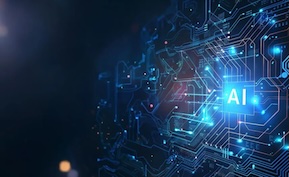Introduction: Modern manufacturers and distributors face increasing pressure to stay agile, reduce downtime, and meet customer expectations for speed and accuracy. The Internet of Things (IoT) has emerged as a transformative force, providing real-time data from machines, sensors, and logistics assets. When integrated with Enterprise Resource Planning (ERP) systems, IoT doesn’t just connect devices—it connects operations, creating a living ecosystem of data-driven decisions. This article explores how IoT-enhanced ERP enables predictive maintenance, smarter shop-floor visibility, and more resilient distribution networks.
What IoT Brings to ERP
Traditional ERP systems have relied on human input and scheduled data uploads, leaving decision-makers with delayed or incomplete information. IoT changes this by embedding real-time data streams into ERP workflows. Key contributions of IoT include:
- Continuous Monitoring: Machines, vehicles, and warehouses can feed live status updates directly into ERP dashboards.
- Granular Data: IoT provides detailed sensor readings—temperature, vibration, location, energy use—that far exceed manual records.
- Automation Triggers: ERP systems can act on IoT data in real time, for example, automatically creating maintenance work orders or rerouting shipments when delays are detected.
This seamless integration turns ERP from a static database into a dynamic decision engine.
IoT-ERP in Manufacturing: Real-Time Shop-Floor Visibility
For manufacturers, the shop floor is the heartbeat of the business. IoT sensors on machines, conveyors, and tools create a live feed of production health that ERP systems can interpret. Benefits include:
- Machine Utilization Tracking: Real-time machine status helps managers understand actual run times versus downtime.
- Bottleneck Identification: ERP can analyze sensor data to highlight which processes are slowing production.
- Quality Assurance: Sensors can monitor conditions like humidity or vibration to flag when product quality may be at risk.
- Workforce Productivity: Wearables and equipment sensors can help track task completion rates and worker safety.
The result is a transparent shop floor where managers can resolve problems as they emerge, not hours or days later.
IoT-ERP in Distribution: Smarter Logistics Networks
Distribution is equally ripe for IoT-driven ERP improvements. Common applications include:
- Fleet Tracking: GPS-enabled trucks send real-time updates into ERP, improving delivery forecasts and customer communications.
- Cold Chain Monitoring: Temperature sensors ensure food, pharmaceuticals, and chemicals stay within safe ranges, with ERP alerts for excursions.
- Warehouse Optimization: IoT tags track inventory locations, feeding ERP with precise stock positions for faster picking and reduced shrinkage.
- Asset Tracking: Pallets, forklifts, and containers can be tagged to reduce losses and optimize equipment usage.
These capabilities improve accuracy, reduce losses, and boost customer satisfaction by ensuring timely, reliable order fulfillment.
Predictive Maintenance with IoT-Enhanced ERP
One of the most impactful applications of IoT in ERP is predictive maintenance. Instead of servicing equipment on fixed schedules, IoT sensors monitor real-world wear and performance data. ERP systems use this to:
- Forecast Failures: Vibration or temperature anomalies trigger early alerts for maintenance teams.
- Schedule Repairs Intelligently: ERP can align maintenance tasks with production schedules to minimize disruption.
- Optimize Spare Parts Inventory: Predictive analytics guide which parts to keep in stock, reducing waste and downtime.
- Lower Costs: Fixing problems before they cause failures reduces expensive breakdowns and emergency repairs.
This shift from reactive to proactive maintenance is only possible when IoT and ERP are tightly integrated.
Key Technical Considerations for IoT-ERP Integration
Distributors and manufacturers need to plan carefully for IoT integration into ERP. Critical factors include:
- Data Volume: IoT devices generate massive data streams; ERP must handle high-frequency inputs without bottlenecks.
- Connectivity: Standardized communication protocols (e.g., MQTT, OPC UA) are essential for smooth ERP integration.
- Security: Each IoT device adds a potential attack surface; encryption and access control are critical.
- Scalability: As IoT deployments expand, ERP must scale to support thousands or millions of connected assets.
- Cloud vs. On-Premise: Cloud ERPs offer scalability, but latency-sensitive IoT data may require hybrid solutions.
Careful architecture planning ensures IoT data enhances ERP rather than overwhelming it.
Best Practices for IoT-ERP Implementation
Organizations should follow best practices to maximize ROI from IoT-ERP initiatives:
- Start Small: Pilot with one line, machine, or distribution hub before scaling to enterprise-wide deployment.
- Focus on Business Outcomes: Define success in terms of reduced downtime, improved OEE (overall equipment effectiveness), or enhanced delivery performance.
- Ensure Cross-Functional Buy-In: Engage IT, operations, maintenance, and finance to avoid siloed solutions.
- Leverage Advanced Analytics: Combine IoT with ERP’s predictive tools for deeper insights, not just dashboards.
- Invest in Training: Staff must be trained to interpret IoT-driven ERP insights and act on them quickly.
This staged, outcomes-focused approach prevents costly overruns and drives measurable improvements.
Future of IoT-ERP in Manufacturing & Distribution
The next generation of IoT-enhanced ERP will move beyond monitoring into autonomous decision-making:
- Self-Healing Systems: Machines will automatically adjust parameters or shut down before catastrophic failure, with ERP logging and coordinating responses.
- Edge Computing: Processing IoT data at the edge reduces latency and only sends actionable insights to ERP, making systems more responsive.
- AI-Driven Optimization: ERP platforms will use machine learning to continuously optimize supply chains, maintenance schedules, and resource allocation.
- Blockchain Integration: Secure, transparent records of IoT data flows will enhance trust in multi-party supply chains.
Distributors and manufacturers who embrace IoT-ERP now will be better prepared for these future advancements.
Conclusion
IoT and ERP are a natural fit for the data-driven enterprise. By integrating real-time sensor data with centralized planning, companies gain unprecedented visibility into shop-floor operations, logistics networks, and asset health. Predictive maintenance, optimized distribution, and automated workflows are just the beginning. As IoT matures, ERP will evolve into an even more powerful platform for resilience, efficiency, and innovation. The companies that invest early in IoT-enhanced ERP will lead the way in manufacturing and distribution excellence.






